Strong selection of Japanese and Korean art at Bonhams New York
Lot 182. Ando Jubei (1876-1953), A fine cloisonné-enamel and partial plique-à-jour square bowl, Meiji era (1868-1912), c.1900. Estimate US$ 70,000 - 90,000 (€62,000 - 80,000). Photo: Bonhams.
NEW YORK, NY.- Building on strong results from last March, Bonhams presents a 322-lot Fine Japanese and Korean Works of Art auction on Sept. 14. The sale features a group of Meiji period masterpieces from the studios of Ando Jubei, Namikawa Yasuyuki, Namikawa Sosuke and Yabu Meizan, among others.
Bonhams is the only major auction house that will hold a dedicated Japanese and Korean art sale this season.
“Bonhams will offer a fine selection of key works from Japanese and Korean masters in a continued effort to support collectors in these categories year round,” said Director of Japanese Art Jeff Olson. “By continually bringing a strong selection to the market, we hope to support both veteran and novice collectors, and emphasize the vibrancy and resilience of the Japanese and Korean art markets.”
A fine cloisonné-enamel and partial plique-a-jour square bowl by Ando Jubei will be on the auction block (estimate U.S. $70,000-90,000). Decorated in the interior with a single crab in gold and silver wires, this bowl is a testament to Ando’s genius. He combined three different and highly-challenging techniques to create this extraordinary design.
Lot 182. Ando Jubei (1876-1953), A fine cloisonné-enamel and partial plique-à-jour square bowl, Meiji era (1868-1912), c.1900. Estimate US$ 70,000 - 90,000 (€62,000 - 80,000). Photo: Bonhams.
The interior decorated with a single crab designed in gold and silver wires in standard and musen cloisonné on a pale blue ground, the rim finished with a band oftotai-jippo and silver wire with a profusion of chrysanthemums with borders in raised brown enamel simulating bamboo, the exterior pale blue, fitted with silver rims stamped jungin, the recessed foot worked in brown counter enamel and signed with the silver wire seal of Ando Jubei - 7 3/8 x 7 3/8 x 3 3/4in (18.7 x 18.7 x 9.5cm
In addition to fine and decorative Japanese works, the auction also offers swords, armor and accouterments. Among the five select full suits of armor is a notable 18th century example built around a helmet (dated 1512) by renowned smith Myochin Nobuie (estimate U.S. $25,000-35,000).
Lot 280. A black-lacquer armor with a Nobuie helmet and important accouterments. The helmet by Myochin Nobuie, Muromachi period (1333-1573) dated 1511, the sleeves and thigh guards attributed to Yoshinaga, the armor Edo period (1615-1868), c. 1750. Estimate US$ 25,000 - 35,000 (€22,000 - 31,000). Photo: Bonhams.
For Korean art collectors, the sale features an attractive group of Buddhist sculptures, furniture, scholar objects and a fine selection of ceramics primarily from an important private collection. A large blue and white porcelain dragon jar from the Joseon dynasty stands nearly 21-inches tall (estimate U.S. $20,000-25,000).
Lot 309. A blue and white porcelain dragon jar, Joseon dynasty (1392-1897), 19th century. Estimate US$ 20,000 - 25,000 (€18,000 - 22,000). Photo: Bonhams.
Note: For another example of a 19th century dragon jar, see Dukwon Museum of Art, Choson jidsai toki meihin zuroku (Masterpieces of Chosun [sic] Arts), Seoul, 1992, p. 53, fig. 33.
Also on the auction block is Gidalim (Waiting) by Korean painter Park Sookeun (1914-1965), estimated at U.S. $150,000-250,000. Sookeun made everyday life in post-war Korea his main subject matter of his works. It is the celebration of a lost era in Korean history that may explain the great popularity of his work today, when such scenes evoke feelings of nostalgia among collectors. His body of work is thought to be quite small, perhaps no more than 400 paintings. His career was cut short by his premature death from cirrhosis of the liver at the age of 51 in 1965.
Lot 321. Park Sookeun (1914-1965), Gidalim (Waiting). Estimate US$ 150,000 - 250,000 (€130,000 - 220,000). Photo: Bonhams.
Notes: Park Sookeun took as his principal subject matter characters and scenery from everyday life in post-war Korea. It is the celebration of a lost era in Korean history that may explain the great popularity of his work today, when such scenes evoke feelings of nostalgia among collectors. Here, a mother and child dressed in traditional hanbok clothing are seen from behind, the child suspended in a sling and the woman's red under-robe showing beneath her hem.
Sookeun's body of work is thought to be quite small, perhaps no more than 400 paintings. His career was cut short by his premature death from cirrhosis of the liver at the age of 51 in 1965.
Waiting is the fifth Park Sookeun painting to be offered by Bonhams: others include Two Figures, December 10, 2012, lot 5346; Selling by the Roadside, November 17, 2004, lot 134; Roadside Vendor, June 23, 2008, lot 8330; On the Road Home, December 13, 2010, lot 5302.
Other highlights include:
Lot 185. A very fine and large cloisonne enamel vase, by Namikawa Sosuke (1847-1910), circa 1900. Estimate U.S. $50,000-70,000 (€44,000 - 62,000). Photo: Bonhams.
The tall baluster vase worked in musen ("wireless") and standard techniques with a lone egret standing among blossoming irises rendered in shades of blue, violet, pink, yellow, green and white, all against a soft yellow ground gradually changing to a blue-grey at the foot, the mounts shakudo, the interior counter enamel chocolate brown, the underside signed with thesakigake mark in silver wire - 18in (45.7cm) high
Lot 154. A pair of wood sculptures of oni (demons), Muromachi period (1333-1573), 15th century or earlier. Estimate U.S. $6,000-8,000 (€5,300 - 7,100). Photo: Bonhams.
Each carved from a single block of wood with applied horn, and modeled in dynamic poses, possibly originally intended to represent Fujin and Raijin, the Gods of Wind and Thunder, with traces of pigment and with modern fitted bronze stands. With wood storage box -10 and 10 1/2in (25.3 and 26.5cm) high (not including stands)
Note: This pair of sculptures were probably decorative architectural elements on a temple or shrine.
Lot 71. A nagajuban kimono for a man, Taisho era (1912-1926), early 20th century. Estimate U.S. $2,500-3,500 (€2,200 - 3,100). Photo: Bonhams.
Fashioned from chirimen (crepe silk) and decorated in hand-painted yuzen dyes with a design of human skulls and bones scattered in marshy grasses beneath a crescent moon obscured by clouds - 53in (134.5cm) high
Lot 184. A fine cloisonné-enamel vase, by Namikawa Yasuyuki (1845-1927), Meiji era (1868-1912), late 19th century. Estimate U.S. $30,000-50,000. Photo: Bonhams.
The elongated ovoid vase with a tapered foot and a tall neck flaring out to the mouth designed in silver wire and colored enamels with a swallow on a wisteria vine, the breast of the bird and some of the wisteria blossoms rendered in musen ("wireless") enamels, the mouth decorated with an elaborate band of geometric patterns, all on a plum-colored ground, signed in a silver tablet Kyoto Namikawa, with silver mounts - 7 3/8in (18.7cm) high

/https%3A%2F%2Fprofilepics.canalblog.com%2Fprofilepics%2F1%2F0%2F100183.jpg)
/https%3A%2F%2Fstorage.canalblog.com%2F03%2F02%2F119589%2F96711876_o.jpg)
/https%3A%2F%2Fstorage.canalblog.com%2F11%2F31%2F119589%2F94773502_o.jpg)
/https%3A%2F%2Fstorage.canalblog.com%2F20%2F83%2F119589%2F94772815_o.jpg)
/https%3A%2F%2Fstorage.canalblog.com%2F26%2F72%2F119589%2F75604929_o.jpg)
/https%3A%2F%2Fstorage.canalblog.com%2F59%2F60%2F119589%2F26458628_o.jpg)
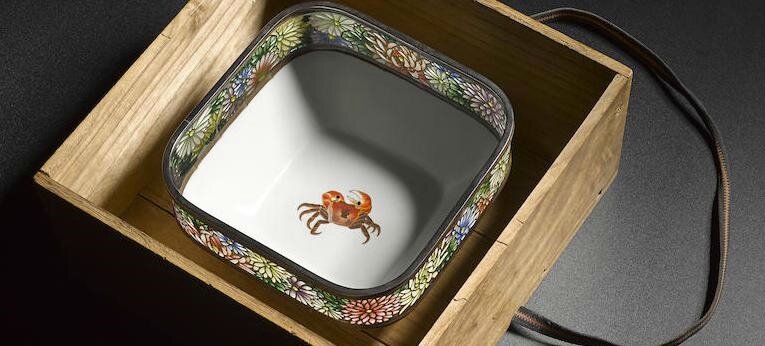
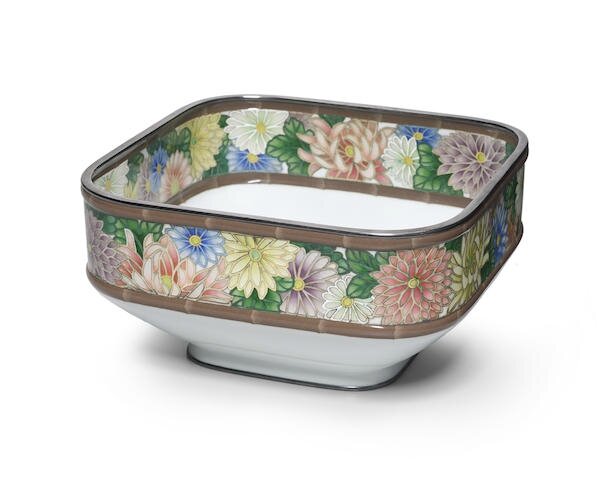
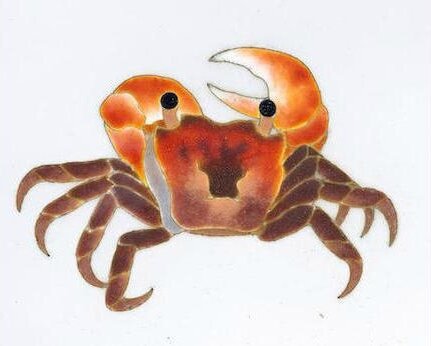
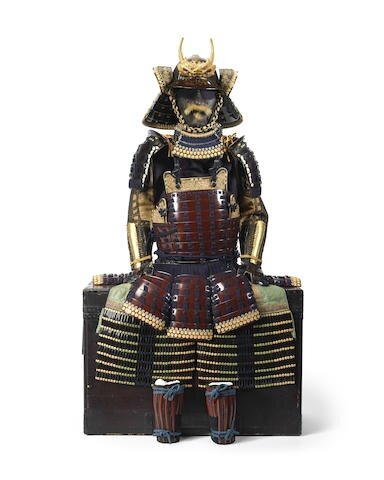
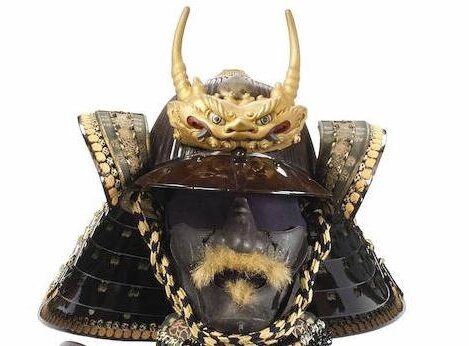
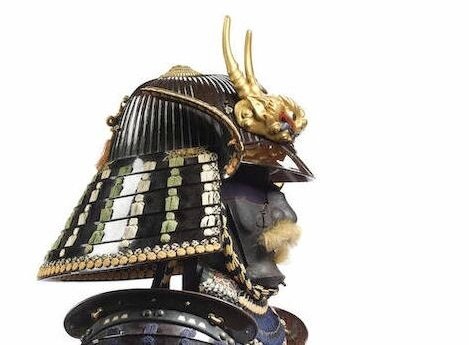
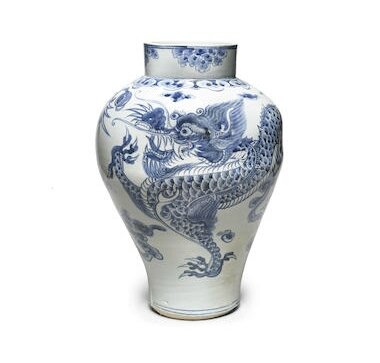


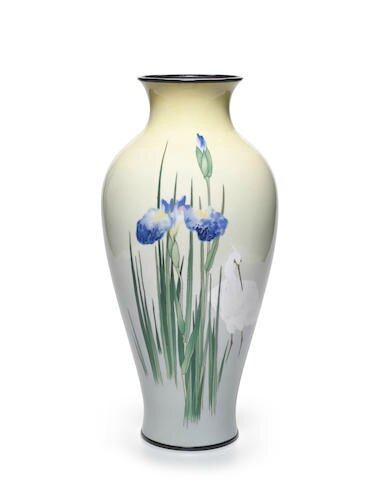



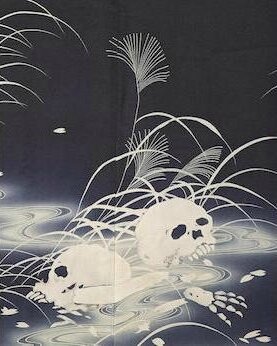
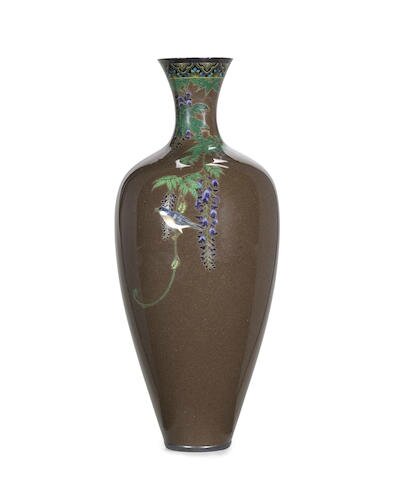
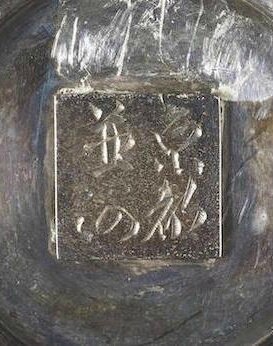


/image%2F1371349%2F20240422%2Fob_389183_telechargement-2.jpg)
/http%3A%2F%2Fstorage.canalblog.com%2F41%2F65%2F119589%2F128904509_o.jpg)
/http%3A%2F%2Fstorage.canalblog.com%2F38%2F00%2F119589%2F112855603_o.jpg)
/http%3A%2F%2Fstorage.canalblog.com%2F03%2F02%2F119589%2F111065721_o.jpg)